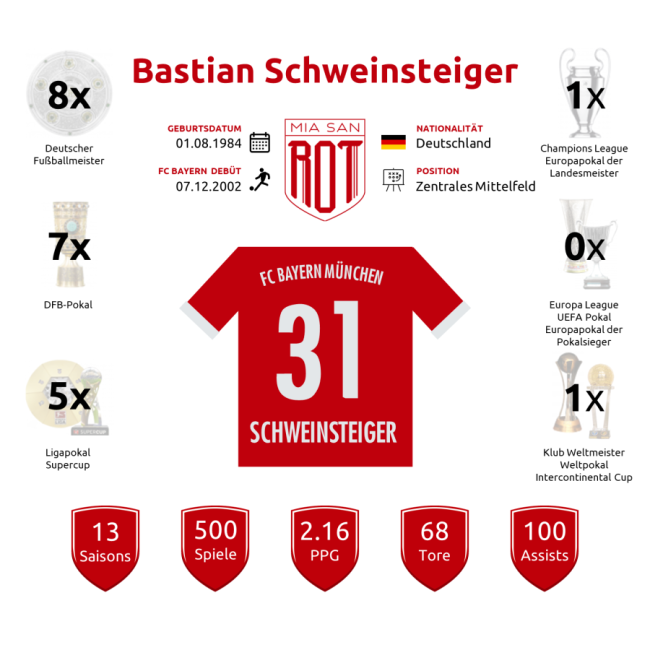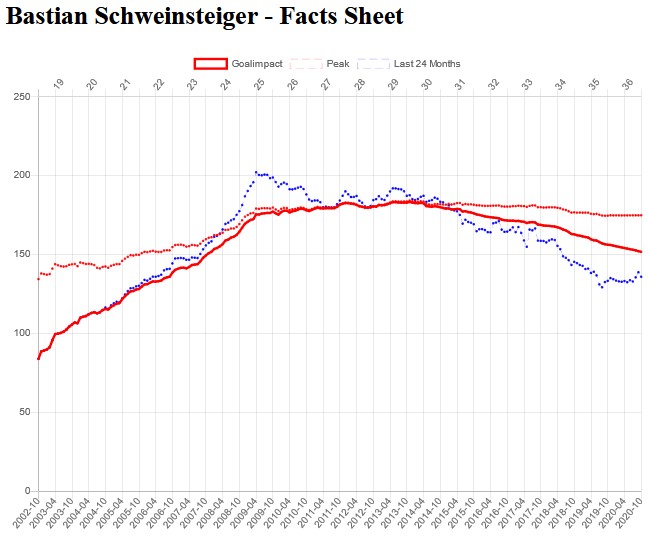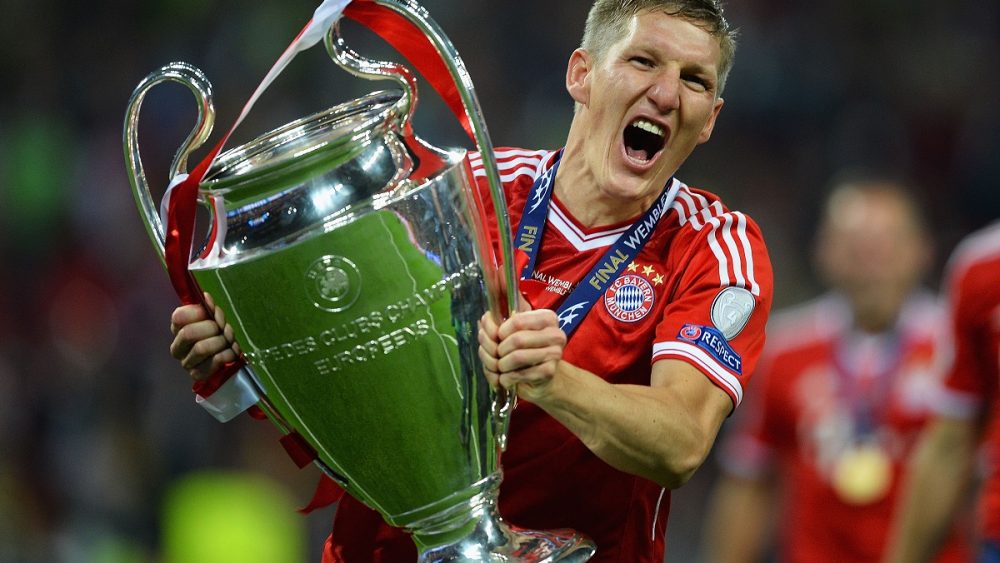FC Bayern – Miasanrot Advent Calendar, Door 31: Bastian Schweinsteiger
For many years he was my undisputed favourite player, and when he first left Bayern and shortly afterwards retired from the national team, I knew that nothing would ever be the same again: Bastian Schweinsteiger, Munich’s “football god” and World Cup hero from Rio.
STILL WITH “ROOM FOR IMPROVEMENT” AFTER HIS CAREER
That was some years ago. In the meantime, Schweinsteiger has aged a little. You still hear and see him relatively often; either on television as an expert at football matches (with room for improvement, although he has somewhat improved lately), or singing in the shower for a commercial (also with room for improvement), or as the main character in Martin Suter’s biographical novel “One of You” (phew, no, that was nothing).

And yet: Schweinsteiger’s time at FC Bayern was not only formative for the club, but also for me as a fan. It was the most emotional and beautiful phase in my life as a fan. Of course, younger and new players are moving up, and you take one or two of them to your heart – but this no longer happens with the same intensity that I felt between 2009 and 2015 (with the absolute low point in 2012 and the absolute ecstasy just one year later). Schweinsteiger has played the biggest part in this.
SCHWEINSTEIGER IN THE LEAD ROLE ALL THE WAY TO THE WORLD CLASS
Why precisely 2009 to 2015? Because he was shifted up from defence to defensive midfield to play alongside Mark van Bommel in the 2009/10 season under then coach Louis van Gaal. This change of position paved the way for him to become a pivotal midfield conductor and centrepiece of the team and eventually (at least in his heyday) advancing to world class. I have many fond football memories starring Schweinsteiger, but one of the best for me is his performance in the 2010 World Cup Round of 16 against Argentina. (Fun Fact: When I’m in a bad mood or find football stupid again, I still watch the summary of that game on YouTube).
Perhaps this match is not the most obvious choice, as other performances by Schweinsteiger for FC Bayern or the national team also stand out, but this 2010 quarter-final was, so to speak, the moment when (to use Uli Hoeneß’ words) he went from being Schweini to Schweinsteiger. The leader on the pitch, the captain who didn’t need a bandage around his arm. His solo run before the 3-0 is unforgotten. We have van Gaal to thank for the fact that Löw also relied on Schweinsteiger in midfield. What started at the club was successfully adopted in the national team.

And so I will also always associate the number 31 with Schweinsteiger, and not with the international telephone code of the Netherlands, the card game “Thirty-One” or the book “31 Songs” by Nick Hornby. No, 31 is the shirt number Schweinsteiger wore at all the clubs he played for: Bayern Munich (2002-2015), Manchester United (2015-2017) and Chicago Fire (2016-2019). BS31, the admittedly somewhat clumsy attempt to market the player in the style of CR7, has left an impact on me (if perhaps no one else).
3 + 1 = 31
For Schweinsteiger himself the number 31 will of course always have a special meaning, too. When he announced on Instagram that he was going to be a father for the second time, he did so with a photo of shoes: on the left his own sports shoes, next to them those of his wife Ana Ivanovic, then a pair of children’s shoes of his first son, and on the far right a pair of grey baby shoes. In the caption he wrote: 3+1=31, a clear reference to his former shirt number.
When a footballer leaves a club, his shirt number is usually picked up by someone else quickly and without much fuss, even if it was a significant and important player. That is, of course, perfectly normal. And yet I’m glad that – even seven years after Schweinsteiger left for Manchester United – the 31 is still his. For me, it always will be.









